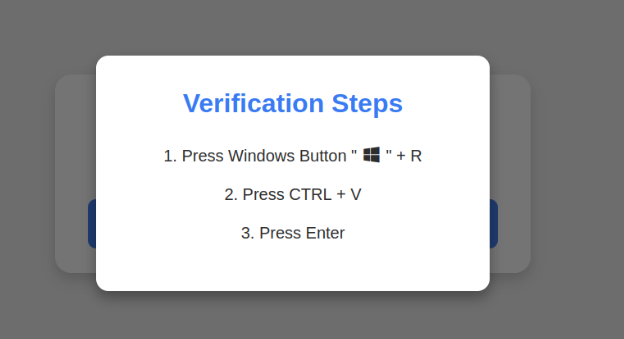Choice of Table Column Types and Order When Migrating to PostgreSQL
When migrating to PostgreSQL, selecting appropriate column types and optimizing their order is crucial for maximizing performance and storage efficiency. Here's a detailed technical guide on these considerations: Data Type Selection Numeric Types Choose the most appropriate integer type based on your data range: SMALLINT: 2 bytes, range -32,768 to 32,767 INTEGER: 4 bytes, range -2,147,483,648 to 2,147,483,647 BIGINT: 8 bytes, range -9,223,372,036,854,775,808 to 9,223,372,036,854,775,807 For decimal numbers: NUMERIC/DECIMAL: variable-length, up to 131,072 digits before the decimal point and up to 16,383 digits after REAL: 4 bytes, 6 decimal digits precision DOUBLE PRECISION: 8 bytes, 15 decimal digits precision Character Types VARCHAR(n): variable-length with limit, 1 byte + actual string length TEXT: variable unlimited length, 1 byte + actual string length CHAR(n): fixed-length, blank-padded Special Types SERIAL types: 4-byte auto-incrementing integer BIGSERIAL: 8-byte auto-incrementing integer JSON: text-based storage of JSON data JSONB: binary storage of JSON data, supports indexing Column Order Optimization Optimize column order to minimize padding and improve CPU cache efficiency: Place 8-byte alignment columns first (BIGINT, TIMESTAMP, DOUBLE PRECISION) Follow with 4-byte alignment columns (INTEGER, REAL) Then 2-byte alignment columns (SMALLINT) Finally, variable-length fields (TEXT, VARCHAR, JSONB) Example of an optimized table structure: CREATE TABLE optimized_table ( id BIGINT, created_at TIMESTAMP WITH TIME ZONE, temperature DOUBLE PRECISION, quantity INTEGER, status SMALLINT, description TEXT ); This ordering minimizes internal fragmentation and reduces the total row size. Advanced Optimization Techniques Use NUMERIC(p,s) instead of DECIMAL(p,s) for better performance in arithmetic operations Implement partial indexes for frequently queried subsets of data Utilize BRIN indexes for large tables with naturally ordered data Consider using UNLOGGED tables for temporary or cache-like data to improve write performance Best Practices Implement CHECK constraints to enforce data integrity at the database level Use EXPLAIN ANALYZE to examine query execution plans and identify optimization opportunities Regularly run VACUUM and ANALYZE to maintain optimal performance and up-to-date statistics Consider using CLUSTER command to physically reorder table data based on an index Utilize partitioning for very large tables to improve query performance and manageability By meticulously selecting data types, optimizing column order, and implementing these advanced techniques, you can significantly enhance your PostgreSQL database's performance, particularly for large-scale or high-traffic applications where even minor optimizations can yield substantial benefits. Sources NoValidate and Parallel Constraints in PostgreSQL - DBA Tips Can you implement NoValidate and Parallel Constraints in PostgreSQL? Oracle to PostgreSQL Migration Blog series - PostgreSQL Support minervadb.xyz Implementing COMMIT, ROLLBACK, and SAVEPOINT in InnoDB Mastering Transaction Management in InnoDB: Optimizing COMMIT, ROLLBACK, and SAVEPOINT for Performance and Integrity - MySQL DBA Support minervadb.xyz Common ClickHouse Analytical Models Most Common ClickHouse Analytical Models chistadata.com

When migrating to PostgreSQL, selecting appropriate column types and optimizing their order is crucial for maximizing performance and storage efficiency. Here's a detailed technical guide on these considerations:
Data Type Selection
Numeric Types
- Choose the most appropriate integer type based on your data range:
- SMALLINT: 2 bytes, range -32,768 to 32,767
- INTEGER: 4 bytes, range -2,147,483,648 to 2,147,483,647
- BIGINT: 8 bytes, range -9,223,372,036,854,775,808 to 9,223,372,036,854,775,807
- For decimal numbers:
- NUMERIC/DECIMAL: variable-length, up to 131,072 digits before the decimal point and up to 16,383 digits after
- REAL: 4 bytes, 6 decimal digits precision
- DOUBLE PRECISION: 8 bytes, 15 decimal digits precision
Character Types
- VARCHAR(n): variable-length with limit, 1 byte + actual string length
- TEXT: variable unlimited length, 1 byte + actual string length
- CHAR(n): fixed-length, blank-padded
Special Types
- SERIAL types: 4-byte auto-incrementing integer
- BIGSERIAL: 8-byte auto-incrementing integer
- JSON: text-based storage of JSON data
- JSONB: binary storage of JSON data, supports indexing
Column Order Optimization
Optimize column order to minimize padding and improve CPU cache efficiency:
- Place 8-byte alignment columns first (BIGINT, TIMESTAMP, DOUBLE PRECISION)
- Follow with 4-byte alignment columns (INTEGER, REAL)
- Then 2-byte alignment columns (SMALLINT)
- Finally, variable-length fields (TEXT, VARCHAR, JSONB)
Example of an optimized table structure:
CREATE TABLE optimized_table (
id BIGINT,
created_at TIMESTAMP WITH TIME ZONE,
temperature DOUBLE PRECISION,
quantity INTEGER,
status SMALLINT,
description TEXT
);
This ordering minimizes internal fragmentation and reduces the total row size.
Advanced Optimization Techniques
- Use NUMERIC(p,s) instead of DECIMAL(p,s) for better performance in arithmetic operations
- Implement partial indexes for frequently queried subsets of data
- Utilize BRIN indexes for large tables with naturally ordered data
- Consider using UNLOGGED tables for temporary or cache-like data to improve write performance
Best Practices
- Implement CHECK constraints to enforce data integrity at the database level
- Use EXPLAIN ANALYZE to examine query execution plans and identify optimization opportunities
- Regularly run VACUUM and ANALYZE to maintain optimal performance and up-to-date statistics
- Consider using CLUSTER command to physically reorder table data based on an index
- Utilize partitioning for very large tables to improve query performance and manageability
By meticulously selecting data types, optimizing column order, and implementing these advanced techniques, you can significantly enhance your PostgreSQL database's performance, particularly for large-scale or high-traffic applications where even minor optimizations can yield substantial benefits.
Sources











































































